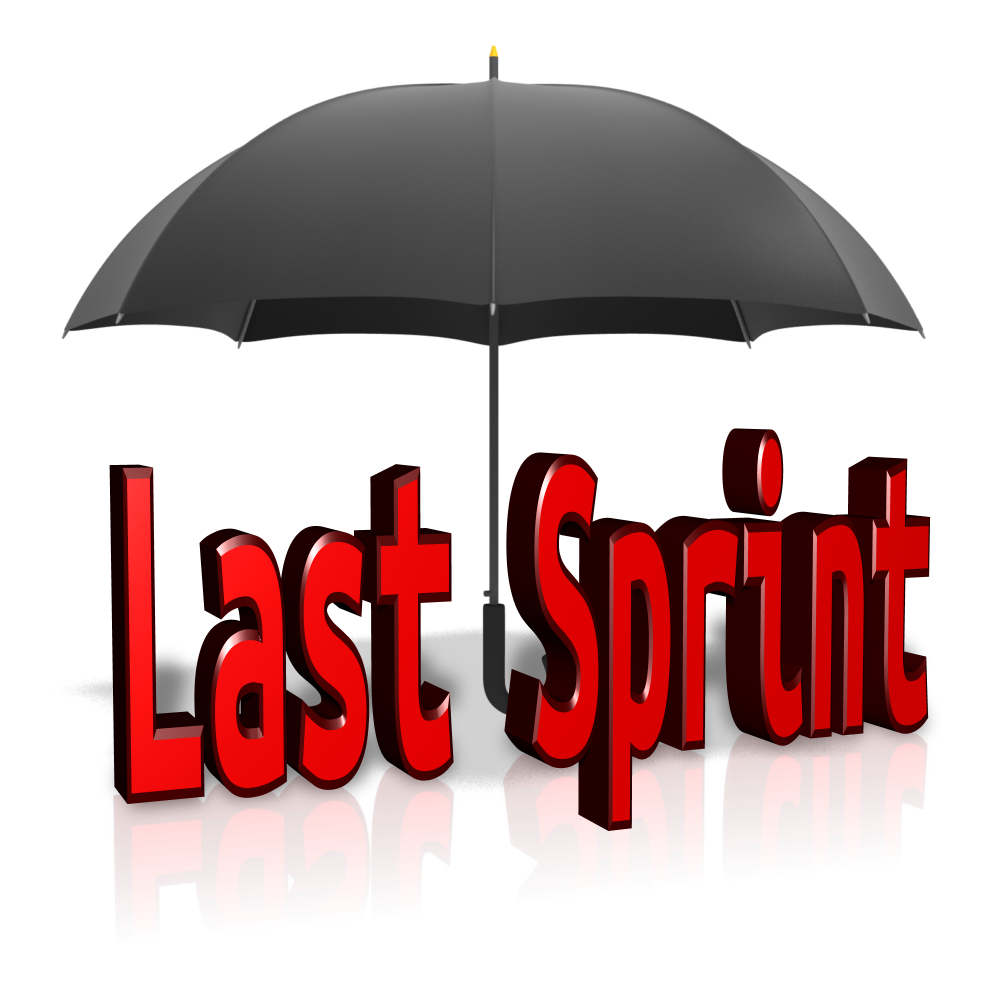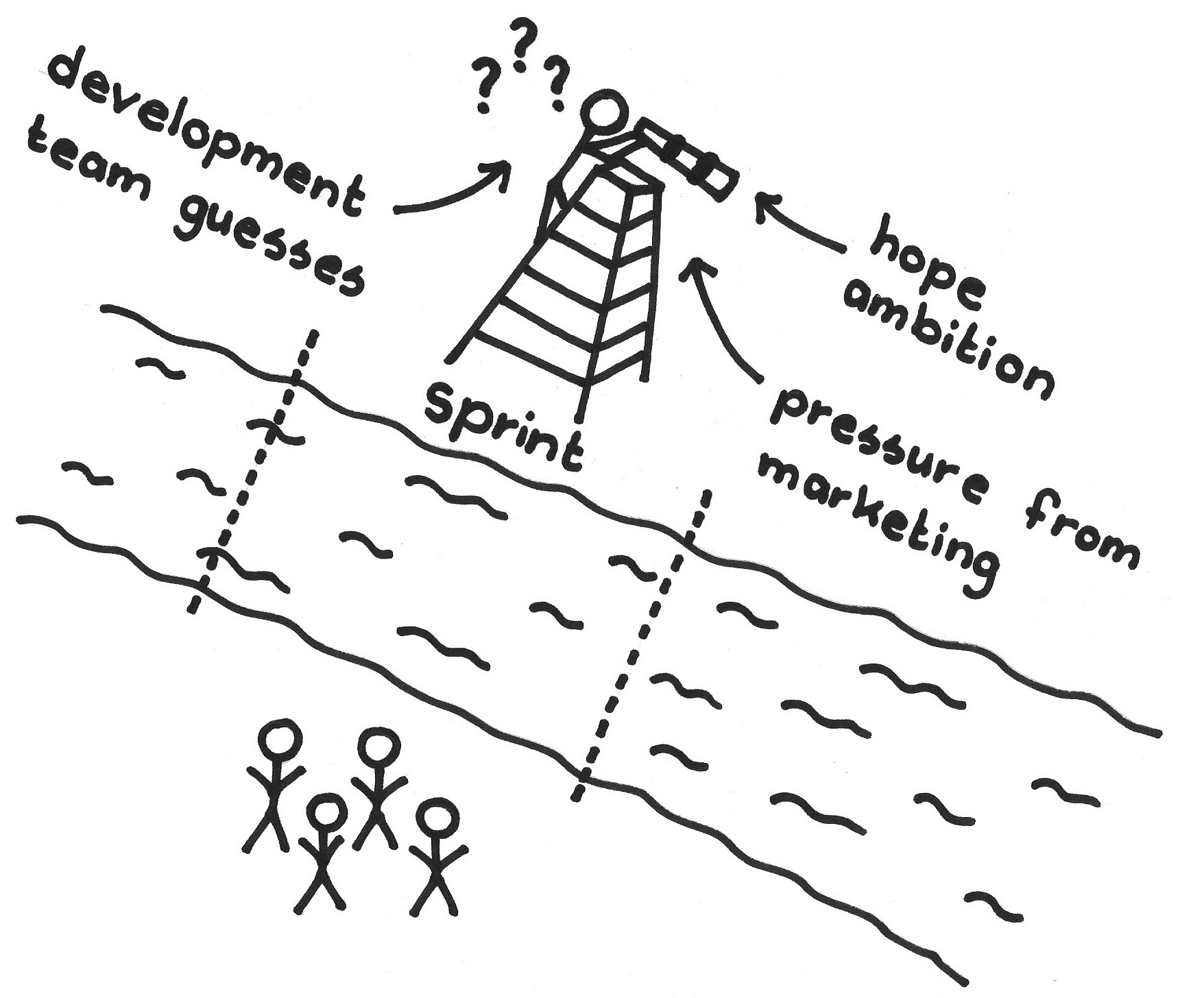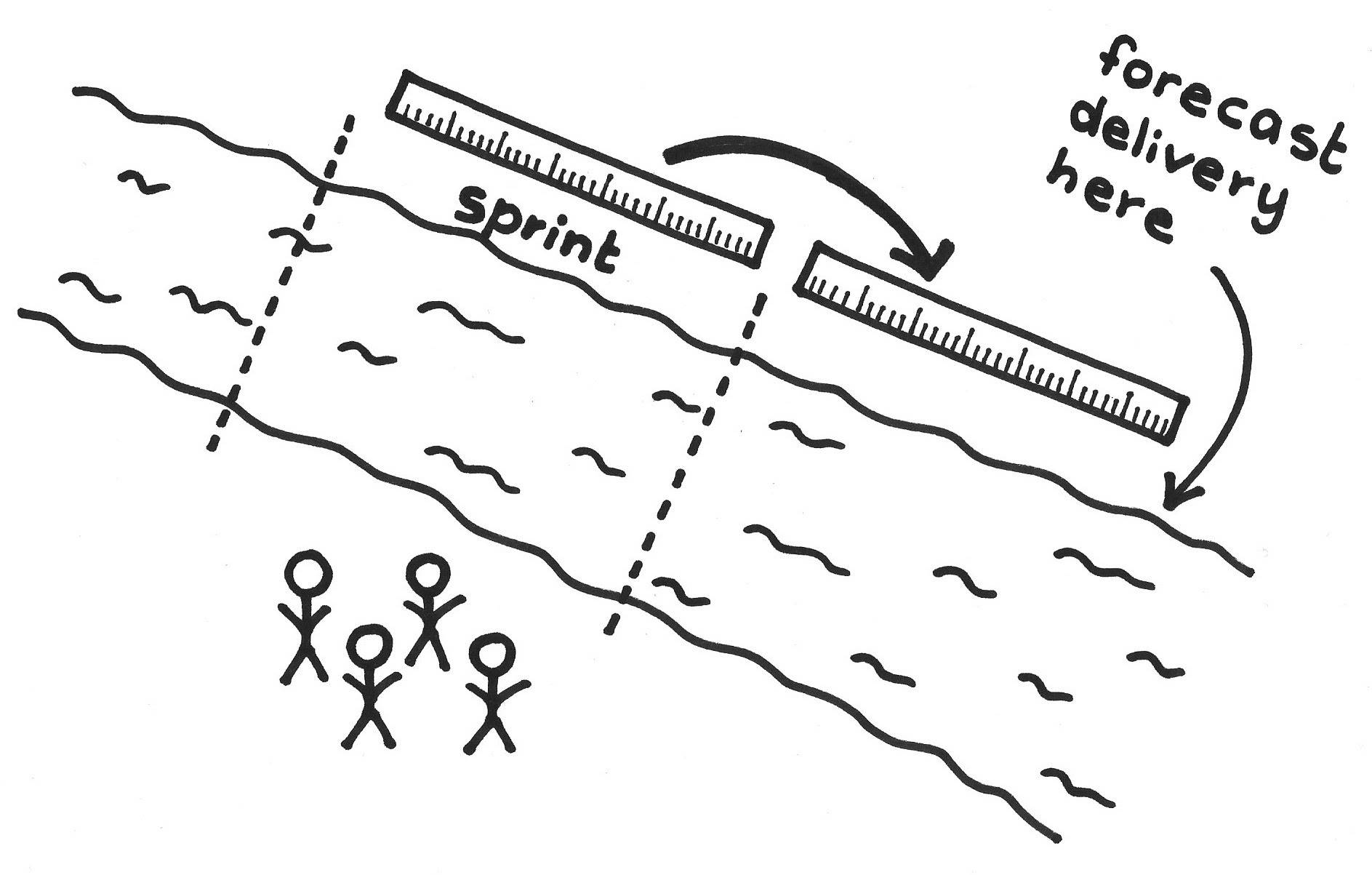...a team is progressing with its historical staff and a stable Sprint length, and the time has come to forecast the team’s delivery for the next Production Episode.
✥ ✥ ✥
It’s human nature that individuals and teams with self-esteem set increasingly higher goals for themselves ([1]). And it’s also human nature for teams to be overly ambitious, which can result either in their taking shortcuts to avoid disappointing themselves and stakeholders, or in failing to deliver what they expected ([2]). By trying to achieve these goals, teams learn. Sometimes such strivings lead to immediate improvement, particularly when the team challenges itself to improve through use of a newfound technique or technology. Sometimes, however, the new technique doesn’t pan out and the team’s performance remains the same or even gets worse.
Sometimes, the team raises the bar just to raise the bar, either to test the limits or to (perhaps unconsciously) publish its bravado. These self-set performance challenges can pay off, especially in the short term. It is more common that these higher levels are unsustainable in the long term and performance reverts to original levels.
In some organizations there is pressure on teams to deliver more work than the team thinks they can commit to. The phrase “stretch goal” or perhaps “BHAG” (Big Hairy Audacious Goal) is the phrase used to make the amount of work seem exciting or challenging. Prescribing these targets on the team will crush autonomy and ignores the kaizen approach of the team (see Kaizen and Kaikaku) that leads to greater work efficiency.
Therefore:
In most cases, the number of Estimation Points completed in the last Sprint is a reliable predictor of how many Estimation Points of work the team will complete in the next Sprint.
✥ ✥ ✥
The team can help manage stakeholder expectations by selecting work that is a good fit for the duration and conditions of the upcoming Production Episode. We define the short-term average of the summed estimation points per Sprint as the Development Team’s velocity (see Notes on Velocity). Since velocity is a statistical quantity with a mean and standard deviation, the team should expect about half of the Sprints to fall short of achieving Yesterday’s Weather, and about half to exceed it. The goal is to improve the process to reduce the variance in the velocity by reducing outside interference of the team, ensuring that the Product Owner provides Enabling Specifications, and that the team adopts good core practices.
Use Running Average Velocity to smooth out variance, and Aggregate Velocity when multiple teams are working together on one product.
If the velocity actually goes up for a given Sprint, consider Updated Velocity.
Armstrong ([3], p. 12) already recommended that teams “use yesterday’s values” for prediction in the early 1980s. His paper, in turn, referred to the forecasting research done by Spyros Makridakis and Michèle Hibon. This research is also known as the M-Competitions or Makridakis Competitions.
[1] Gary P. Latham and Edward A. Locke. “New developments in and directions for goal-setting research.” In European Psychologist 12(4), 2007, pp. 290-300.
[2] Lisa D. Ordóñez, Maurice E. Schweitzer, Adam D. Galinsky, and Max H. Bazerman. “Goals gone wild: The systematic side effects of overprescribing goal setting.” In Academy of Management Perspectives 23(1), 2009, pp. 6-16.
[3] J. Scott Armstrong. “Forecasting by Extrapolation: Conclusions from Twenty-five Years of Research.” In Interfaces 14(6), http://repository.upenn.edu/cgi/viewcontent.cgi?article=1083&context=marketing_papers, 1984, p. 12 (accessed 2 November 2017).
Picture credits: Image Provided by PresenterMedia.com.



